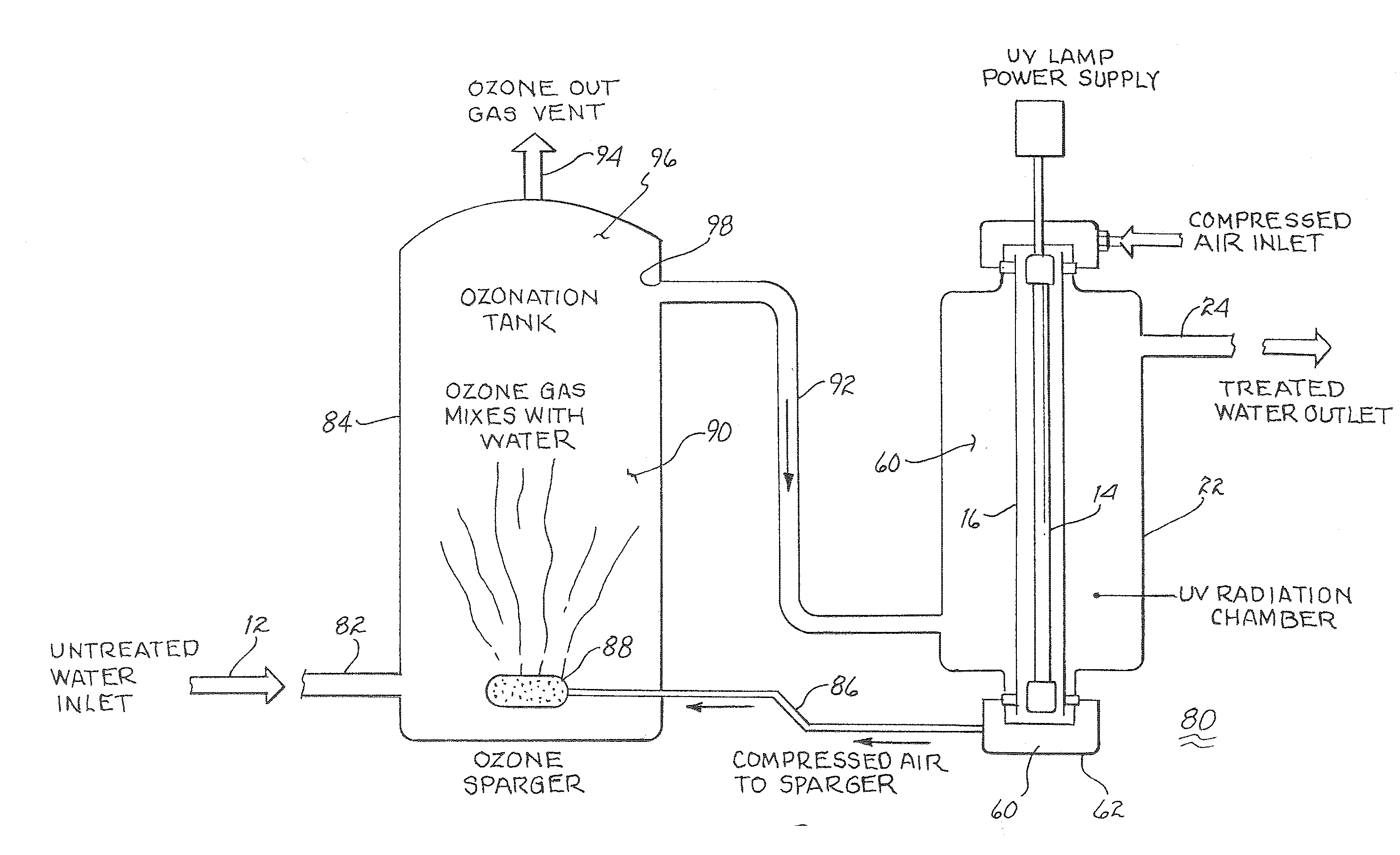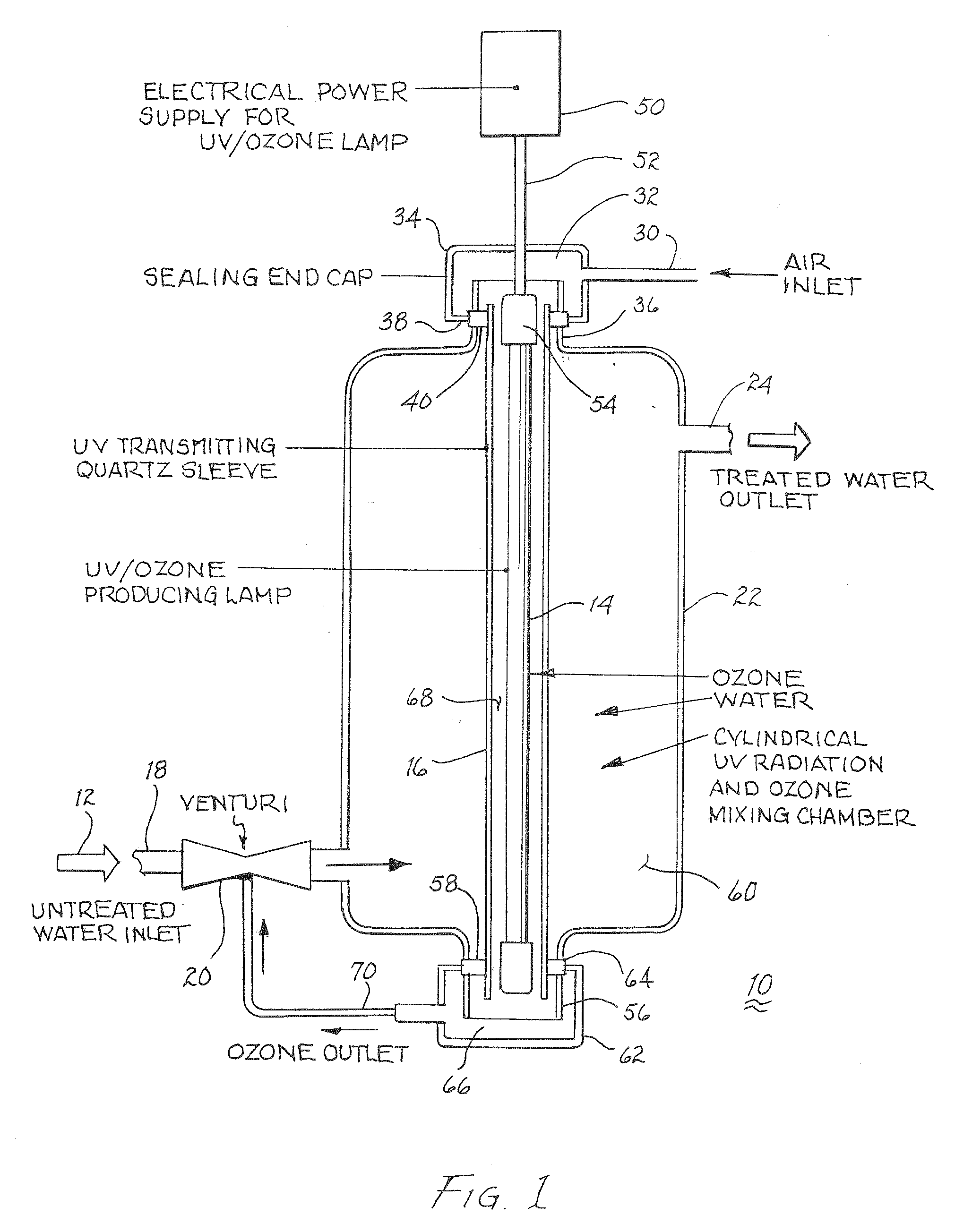Method and apparatus for reducing microorganisms in water
- Summary
- Abstract
- Description
- Claims
- Application Information
AI Technical Summary
Benefits of technology
Problems solved by technology
Method used
Image
Examples
example 1
Test Organism: MS-2
[0055] Propagation and assay of MS-2 coliphage was performed in accordance with Thurston-Enriquez et al. (2003a). Expected UV inactivation was derived from the work of Thurston-Enriquez et al. (2003a). In that paper, the UV dose for 90%-99.99% inactivation for MS-2 coliphage is shown in Table 3 below.
TABLE 3UV doses for 90% to 99.99% inactivation of test viruses in BDFwater and groundwater at room temperature (from Thurston-Enriquezet al. (2003a)).UV dose (mJ / cm2) for inactivation levelVirusWater Type90%99%99.9%99.99%MS-2 phageBDFb235587119Feline calcivirusBDFb61626 36Grounda51321 29AdenovirusBDFb50109167 226cGrounda53103153 203c
aGround, treated (de-chlorinated) groundwater
bBuffered demand-free water
cExtrapolated value, not achieved in bench-scale experiments, based on linear regression.
[0056] Ozone was generated by a corona discharge generator and injected into 4 L of dechlorinated tap water at room temperature and pH 7.6. The water was raised and maintaine...
PUM
 Login to View More
Login to View More Abstract
Description
Claims
Application Information
 Login to View More
Login to View More - R&D
- Intellectual Property
- Life Sciences
- Materials
- Tech Scout
- Unparalleled Data Quality
- Higher Quality Content
- 60% Fewer Hallucinations
Browse by: Latest US Patents, China's latest patents, Technical Efficacy Thesaurus, Application Domain, Technology Topic, Popular Technical Reports.
© 2025 PatSnap. All rights reserved.Legal|Privacy policy|Modern Slavery Act Transparency Statement|Sitemap|About US| Contact US: help@patsnap.com



